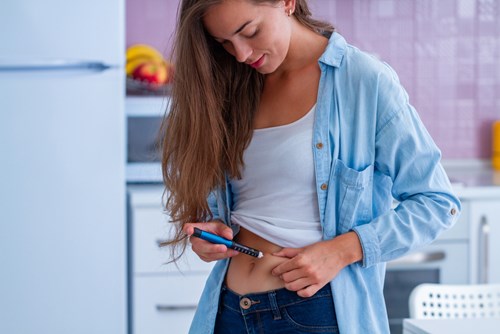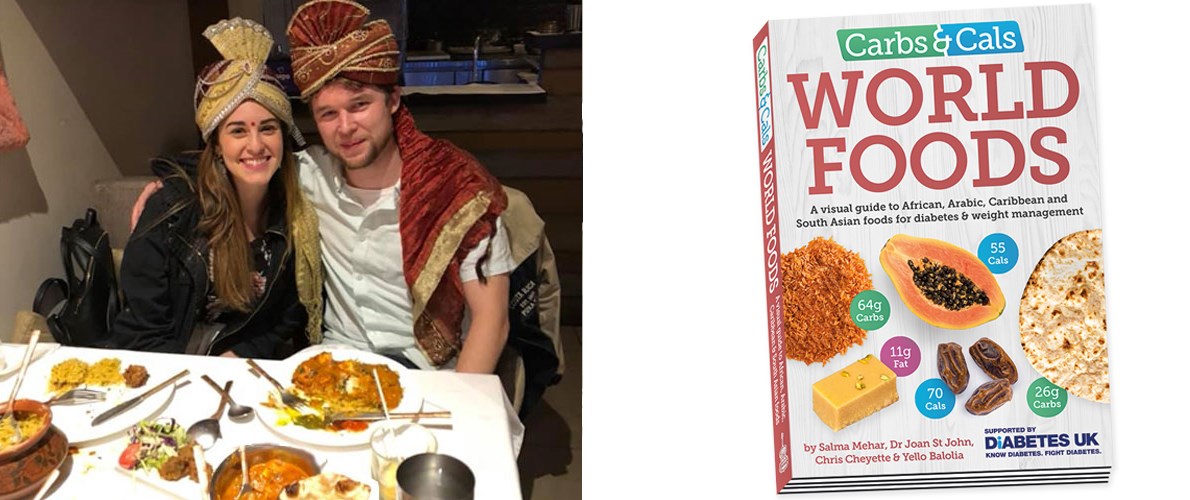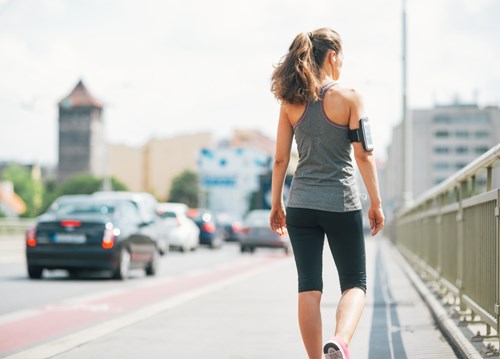Those bothersome blood sugar spikes after meals…
Why they happen and how to try and reduce them if you live with type 1 diabetes.
Living with type 1 diabetes requires you to regularly check your blood sugar levels before you eat. However, we may not always consider what happens to our sugar levels immediately after we eat; despite it being very normal for people who don’t have diabetes, let alone those who do, to temporarily have high sugar levels.
Given that having high sugar levels can give you symptoms like thirst, tiredness and needing to go to the toilet a lot, learning about ways to try and reduce spikes in your sugar levels after meals may make a difference to your overall health and wellbeing.
Why do people get blood sugar spikes after meals?
When people eat a meal, especially when it contains carbohydrates, it is normal for them to have a temporary spike in their sugar level (often known as a post-prandial spike) before the insulin their body produces immediately starts working to lower the spike. For someone with type 1 diabetes, who can’t produce their own insulin, these spikes can be higher and last longer.

This is because it can take longer for the type of insulin they inject (or that is delivered via an insulin pump) to start working, in comparison to the insulin that is produced naturally by the body of someone who does not have diabetes, to reduce these post-meal spikes.
Furthermore, it is important to know that people living with type 1 diabetes may have alterations in different digestive enzymes which will cause faster digestion of our meals (resulting in the glucose reaching the bloodstream faster). This can obviously impact on the size of the spike too.
Why is it important to reduce the size and duration of these spikes?
Reducing these spikes may help you to increase the amount of time you spend in your target blood sugar range (also known as the time in range), which will have a positive impact on your future health. You should consult your healthcare team to understand the best target range for you, as this will differ from person to person. However, the International Society for Paediatric and Adolescent Diabetes (ISPAD) recommends a target of 5.0-10.0 mmol/L (after meals, when there is no longer any active bolus insulin on board).
Symptoms of a high blood sugar level also vary in individuals, but they may cause you to feel thirsty, tired, stressed and need to go to the toilet a lot. In the short term, by avoiding prolonged high blood sugar readings after eating, you should also reduce the occurrence of these symptoms and improve your energy, cognitive (thinking) and athletic ability and overall mood.
How do I detect spikes in my sugar levels?
The exact timing of blood sugar spikes can vary from person to person and meal to meal. However, on average, the post-meal peaks tend to be about one hour and 15 minutes after starting a meal.
The best way to measure post-meal patterns is by using a continuous glucose monitor (CGM) or Flash monitors. These devices can give you a clear view, including graphs, of what happens with the glucose levels after meals without the need for finger pricking (image below). You can ask your diabetes health team if they are available for you as they are not available to everybody.
If you are not using a CGM, then please speak to your healthcare team about the best way to do this for you with finger prick testing.
How do I know it is a spike?
There is no universal answer or specific guidelines on when a sugar level is too high after meals. However, if post-meal readings are consistently above your target range (or the recommendations from ISPAD 5mmol/L to 10mmol/L), then you should discuss whether it would be beneficial for you to address these spikes and how to do this, with your healthcare team (see below for some suggestions for your discussion).
If you are reviewing your post-breakfast sugar levels, you should also be aware of changes in your hormones in the morning, which cause increases in sugar levels (this is known as the dawn phenomenon). This Digibete video may help.
Some ways to reduce blood sugar spikes after meals
Below are some ways you may be able to reduce the size and duration of some of your blood sugar spikes after meals. Before implementing any of the below, please do speak to your healthcare team to understand if this is right for you.
1. Choose low glycaemic index foods
The glycaemic index is a number that determines how quick the foods you eat with carbohydrates raise your blood glucose levels. Some food options that have carbohydrates may be absorbed much faster than others and this would depend on factors such as:
- Fibre content: high-fibre foods digest slower than low-fibre foods
- Liquid or solid: solids would digest slower than liquids.
- Fat content: foods with high amounts of fat would digest slower than foods with a little amount or no fat at all.
- Temperature: cold foods digest slower than hot foods
- Under-cooked or under-ripe foods digest slower than over-ripe/over-cooked foods
- Processed foods will digest faster than whole foods.
A lot of foods in our diet have a high glycaemic index (glucose is released very quickly in the blood) such as white bread, rice, and most of the breakfast cereals. If we opt for low glycaemic index foods such as oats, wholemeal bread, pasta, and peas, we can prevent or flatten blood glucose spike after our meals as the insulin can work at the same rate as the glucose reaches the blood.
When blood sugar levels are low (below 4mmol/L) or hypoglycaemic we need high glycaemic index foods (hypo treatment), such as dextrose tablets or juice, that are absorbed quickly to raise our levels and to treat the hypo.
2. Choosing the right insulin at the right time
For those taking rapid-acting insulin at mealtimes, it can take around 15 minutes to start acting, in comparison to a person without diabetes where the insulin their body produces naturally reaches the blood in just seconds.
Rapid-acting insulins (Humalog, Novorapid and Apidra) will cover the post-meal blood sugar rise better than regular insulin. Newer ultra-rapid insulins, such as Fiasp, work even faster.
However, some people with Type 1 diabetes have gastroparesis. This is a type of nerve damage which can affect the digestive system. Food is unable to move through the digestive tract normally and this can lead to bloating, constipation and diarrhoea. For people who have gastroparesis, it may be better to give boluses before eating.
Timing of injections
Because we inject insulin into fat just beneath the skin (subcutaneous) we are advised to inject 15-20 minutes before eating to prevent blood glucose spikes. You can decide the timing depending on the glycaemic index of the foods you are going to eat and your pre-meal blood glucose reading.
If your sugar level before you eat is also high (pre-meal) and your meal has mostly high glycaemic index foods, it may be better to give your insulin and then wait 30 minutes, to prevent a very high spike afterwards.
Speak to your diabetes team for individual support with insulin timing because there are several factors that can influence when to inject your mealtime insulin. You may also risk having a hypo if your insulin works too quickly.
Counting carbs accurately can also help you to prevent long glucose spikes after meals. I personally use the Carbs and Cals book and app every time I count my carbohydrates. When I have traditional foods of other cultures such as Indian, Caribbean or Middle Eastern, I use the World Foods book.

My partner and I (above), both living with type 1 diabetes, after carb counting Indian food and considering how to ease our blood sugar spikes after meals.
You can watch the video below about carbohydrate counting:
3. Add food barriers or split up meals
Foods that are mainly fat or protein help slow the digestion and absorption of carbohydrates. This is why it is better to have balanced meals containing protein foods (animal or vegetable) fats (oils, nuts), low glycemic index carbohydrate sources, and vegetables that contain fibre.
You can use this to your advantage. If, for example, breakfast is a problem and you’re having cereal, replace the cereal with a slice of toast, egg, and avocado. The protein and fat in the egg usually slow the absorption of the carbohydrate and help to prevent post-meal glucose spikes.
Another good way to give your insulin time to act is to eat your vegetables or salad first, as they contain low amounts of carbohydrates. If you are eating a large meal, you may consider saving a portion for later. Don’t forget the dawn phenomenon at breakfast time.
4. Consider taking a walk or being active after a big meal
Walking for 10 or 15 minutes after you have a meal that you know might send your levels high can be a good way to prevent that post-meal spike. This can help with digestion and make you feel better after eating.

Another option is to schedule more active chores after our meals such as shopping, housework, or walking the dog, although this may not be for everyone.
5. Finally, prevent hypoglycaemia
This may sound strange, but low blood sugar before meals can cause “accelerated gastric emptying” (food can digest and raise blood glucose quicker than usual). Having fewer hypos before meals therefore helps to reduce post-meal spikes.
It is very important to know how these different scenarios can impact our post-meal glucose levels differently in individuals
Regarding this topic, some questions that I ask myself before I eat are:
- Which of the foods in the meal contain carbohydrates and how much?
- Am I counting my carbohydrates accurately?
- Does this type of meal usually cause a blood glucose spike?
- What can I do at this moment to have a good glucose level during the following 4 hours?
In my opinion, as a dietitian living with type 1 diabetes, it requires lots of attention, thought and energy to keep our levels in range. However, it helps to know that we shouldn’t be chasing perfection in blood glucose numbers, but instead celebrate our daily efforts to keep ourselves healthy.
I challenge you to consider your daily food choices and to analyse how different types of meals and insulin timings work best for your body. You can work this out at your own pace and ask for the support of your diabetes team.
Have you found something else that works for you to prevent blood glucose spikes? I look forward to hearing about it!









